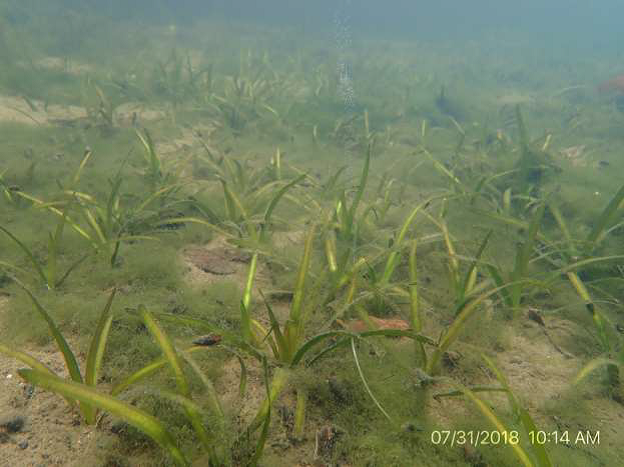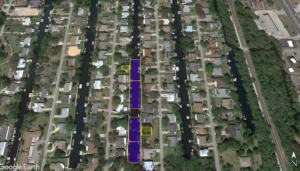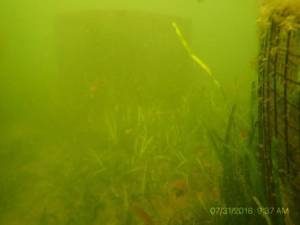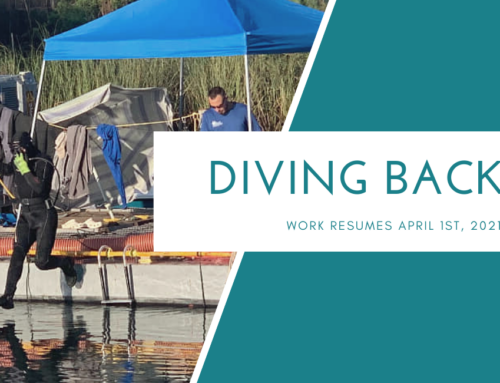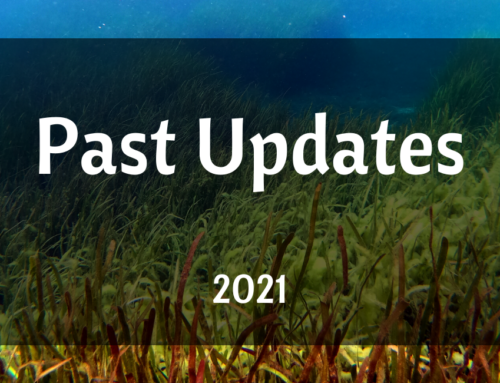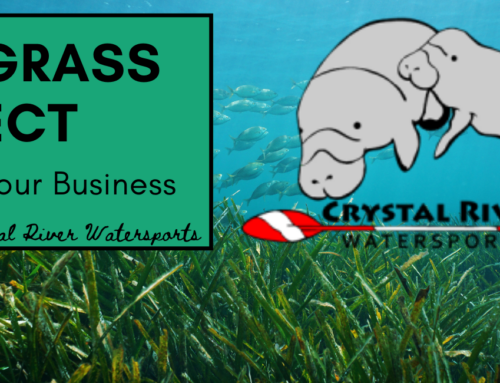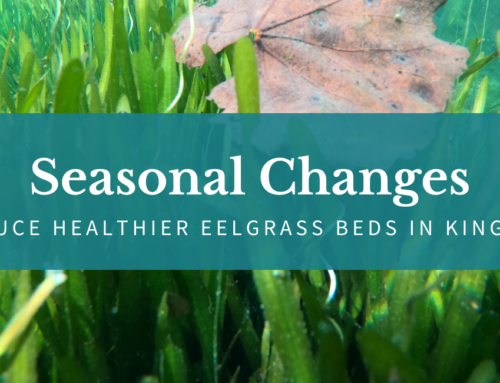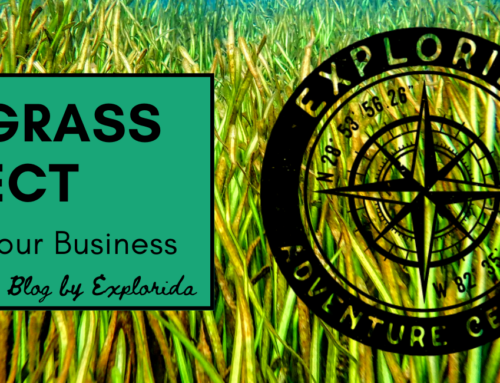Dive in with us to see Phase 1.B as it is maintained!
Each month, scientists assess and maintain restored canals as part of the Kings Bay Restoration Project work plan. In July 2018, canals 1, 2, and 4 by Three Sisters Springs were maintained. These canals were cleaned during the 2017 restoration season.
During the restoration process, Lyngbya and other detrital material is vacuumed out of the canal and the eelgrass plants are planted on clean sandy canal bottoms (learn more here). Once the eelgrass plants take root, they create an aerobic zone in the water that is filled with dissolved oxygen, much like plants on land that produce oxygen. The underwater wildlife loves the rich dissolved oxygen filled waters and uses the eelgrass beds as habitat and food.
Once a month divers will scrub down the cages and remove anything that has begun to grow on it using a hand vacuum. They also vacuum Lyngbya from around the cages too. If allowed to grow, this mat of plants, algae, and Lyngbya would blanket the cage and prevent light from reaching the plants. By removing what the divers refer to as “biofouling,” they ensure the plants have the best possible conditions to grow and thrive. In July 2018, Lyngbya and other nuisance algae were removed from about an acre of the middle and southern end of canal 4. This area was observed to have a large amount of Lyngbya forming during the June 2018 plant maintenance and monitoring.
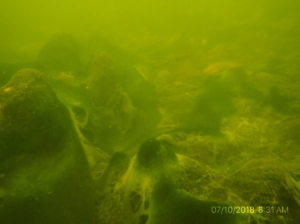
Pictured: Lyngbya mat covers the bottom of the south end of Canal 4. Don’t worry, the eelgrass plants underneath are still alive!
Many plants were observed outgrowing their protective cages, with some plants converging between two manatee exclusion cages. This creates a large, dense patch of plants. Canal 1 is showing large patches of plants and no dense algal mats. Canal 2 is covered with dense, tall plants. However, prop scars were observed in the middle of the canal. (Check out great ways to better manage your boat around the eelgrass.) Canal 4 showed plants extending beyond the manatee exclusion cages but a high number of turtles in this canal are grazing on the plants. Therefore, plant density is not as high as observed in Canal 1 and 2. Considering we planted these eelgrass plants during the winter when they don’t grow much, they have certainly made up for it now that the warm summer months are here!
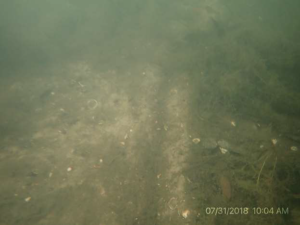
Pictured: A prop scar in Canal 2 was observed during July 2018. Want to learn how to better manage your boat to avoid prop scars? Check out our tips here.


